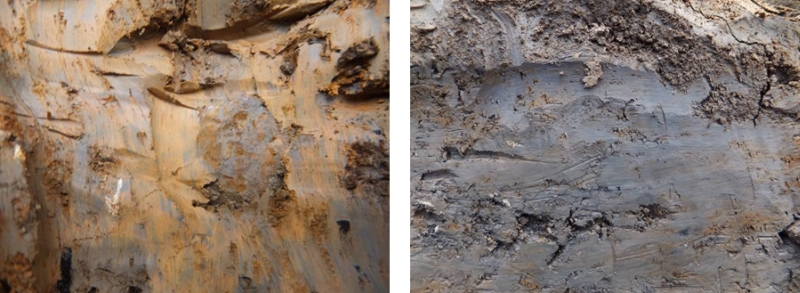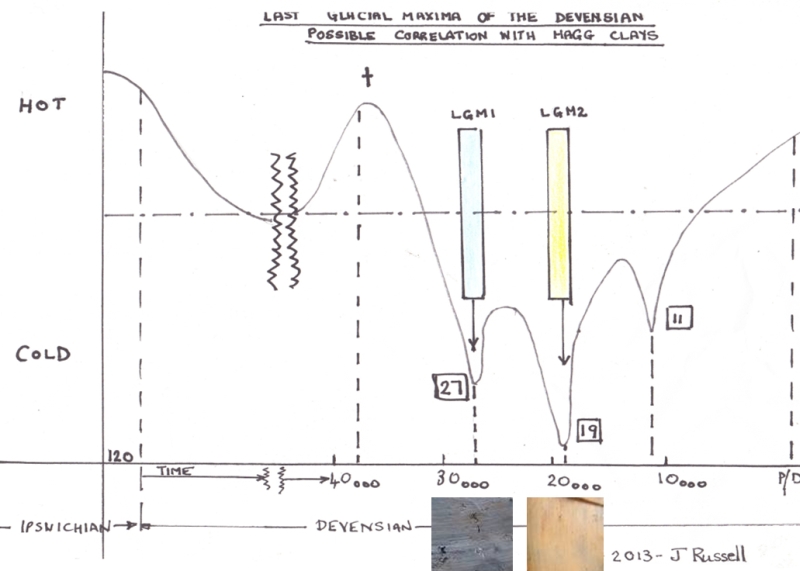| The swaag.org website uses cookies to provide website use and other information. Full details | Swaledale and
Arkengarthdale Archaeology Group Swaledale Geology Pages © John Russell |
SWAAG Honorary President:
Tim Laurie FSA |
The Glacial Deposits of the Hagg Farm Trenches
| During 2012/13 the Swaledale and Arkengarthdale Archaeology Group have excavated a Romano-British settlement halfway up the fell-side at Hagg Farm, Fremington Swaledale. In many of the trenches a yellow band of clay often less than 10cm thick with a much deeper deposit of blue clay underneath was found. In one trench it was noticed that the blue clay also contained small amounts of charcoal. |
 |
| Hagg Farm Fremington. X=Excavation
site. |
 |
| The pictures show two clays with the bright yellow one overlying a blue clay. It is suggested that these two clays correspond to the glacial maxima (coldest climate) of the last Devensian Ice Age. These maxima are show on the graph. The dates for this are 27 ka and 19 ka before present. The bright blue clay appears to have a local origin. At the bottom of some of the trenches is a soft grey shale. This shale can be moulded in the fingers into a clay which appears blue. The yellow clay is more problematic but could be a local, soft, calcium rich mudstone ground up by the glacier. |
 |
| Similar kinds of clay deposits have been
found in the southern dales. Clay is a textural term to denote
the finest grade of clastic sedimentary particle. These
particles are less than 4 microns in diameter and shale
particles are of similar size. John Russell 24.06.2013 |